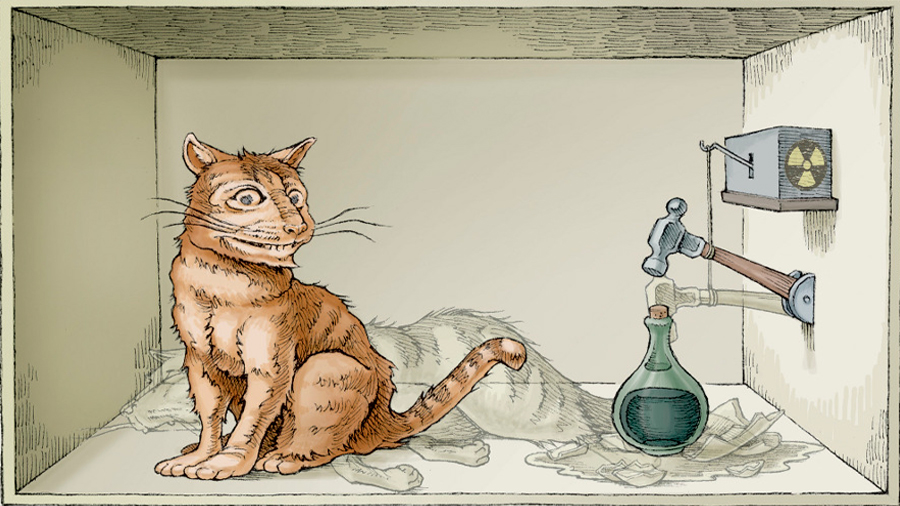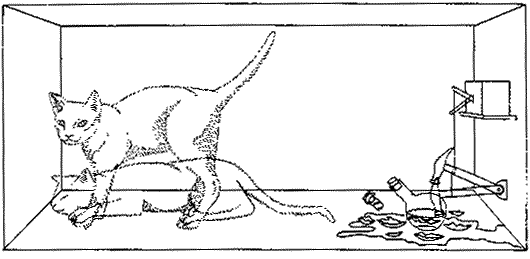

The EPR article highlighted the counterintuitive nature of quantum superpositions, in which a quantum system such as an atom or photon can exist as a combination of multiple states corresponding to different possible outcomes.

Schrödinger intended his thought experiment as a discussion of the EPR article-named after its authors Einstein, Podolsky, and Rosen-in 1935. Depending on the light conditions, the cat appears either alive or dead.

The scenario is often featured in theoretical discussions of the interpretations of quantum mechanics, particularly in situations involving the measurement problem.Ī life-size cat figure in the garden of Huttenstrasse 9, Zurich, where Erwin Schrödinger lived 1921–1926. This thought experiment was devised by physicist Erwin Schrödinger in 1935, in a discussion with Albert Einstein, to illustrate what Schrödinger saw as the problems of the Copenhagen interpretation of quantum mechanics. In the thought experiment, a hypothetical cat may be considered simultaneously both alive and dead as a result of its fate being linked to a random subatomic event that may or may not occur. In quantum mechanics, Schrödinger's cat is a thought experiment that illustrates a paradox of quantum superposition. This poses the question of when exactly quantum superposition ends and reality resolves into one possibility or the other. Yet, when one looks in the box, one sees the cat either alive or dead, not both alive and dead. The Copenhagen interpretation of quantum mechanics implies that after a while, the cat is simultaneously alive and dead. a single atom decaying), the flask is shattered, releasing the poison, which kills the cat. Geiger counter) detects radioactivity (i.e. Schrödinger's cat: a cat, a flask of poison, and a radioactive source are placed in a sealed box.


 0 kommentar(er)
0 kommentar(er)
